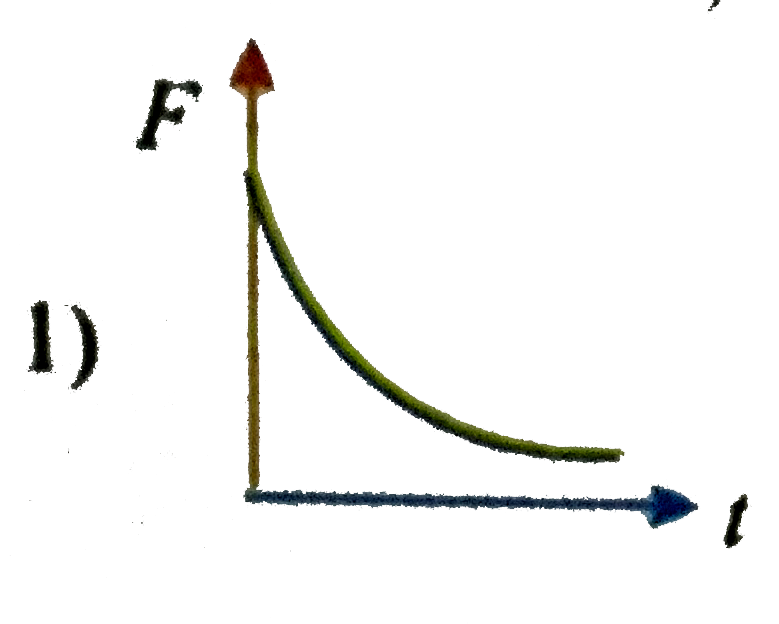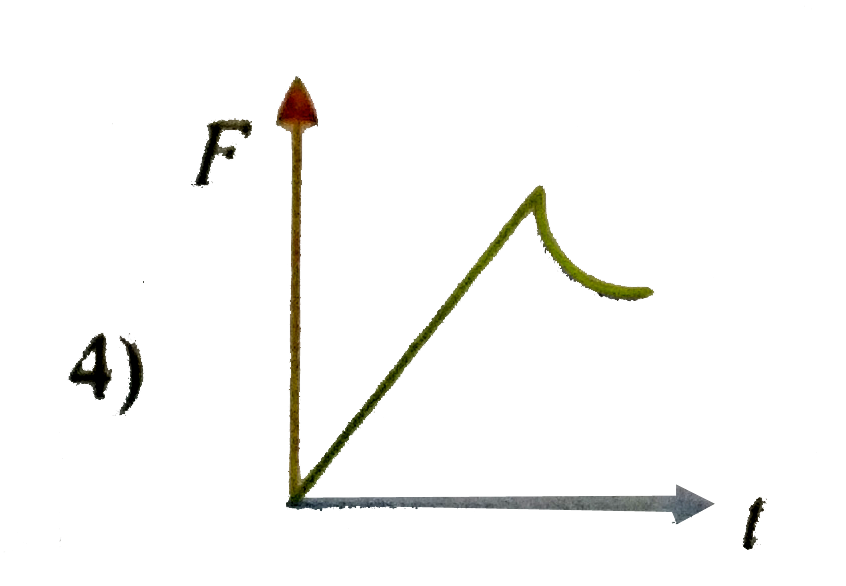If F=F0(1−e−t/λ) the F-t graph is
A

B

C

D

Text Solution
The correct Answer is:C
For t=0,F=0, For t=λ,F=0.63F0
|
Topper's Solved these Questions
- LAW OF MOTIONBOOK - NARAYNACHAPTER - LAW OF MOTIONEXERCISE - EXERCISE - II (C.W)(IMPULSE)
2 Videos
- LAW OF MOTIONBOOK - NARAYNACHAPTER - LAW OF MOTIONEXERCISE - EXERCISE - II (C.W)(OBJECTS SUSPENDED BY STRINGS AND APPARENT WEIGHT)
21 Videos
- LAW OF MOTIONBOOK - NARAYNACHAPTER - LAW OF MOTIONEXERCISE - EXERCISE - I (H.W)(CIRCULAR MOTION)
3 Videos
- KINETIC THEORY OF GASESBOOK - NARAYNACHAPTER - KINETIC THEORY OF GASESEXERCISE - LEVEL-III(C.W)
52 Videos
- MATHEMATICAL REVIEW & PHYSICAL WORLDBOOK - NARAYNACHAPTER - MATHEMATICAL REVIEW & PHYSICAL WORLDEXERCISE - C.U.Q
13 Videos
Similar Questions
Knowledge Check
If F=F0(1−e−1/λ) the F-t graph is .
A B
B C
C D
D
If f(x) is differentiable function and f(x)=x2+∫x0e−t(x−t)dt,then f)-t) equals to
A−23B23C13D−13If f(t)=1−t1+t then the value of f'(1/t) is
A−2t2(t+1)2B2t(t+1)2C2t2(t−1)2D−2t2(t−1)2
Let f(x)=∫x0ettdt(x>0),
then e−a[f(x+1)−f(1+a)]=
View SolutionLet function F be defined as f(x)=∫x1ettdtx>0 then the vaiue of the integral ∫11ett+adt where a>0 is
View SolutionIff(y)=ey,g(y)>0,andF(t)=∫t0t(t−y)dt,then F(t)=et−(1+t) F(t)=tet F(t)=te−1 (d) F(t)=1−et(1+t)
View SolutionLet f(x)=∫x0et(t−1)(t−2)dt. Then, f decreases in the interval
View SolutionLet f(x)=∫x0ettdt(x>0),
then e−a[f(x+1)−f(1+a)]=
View Solution
